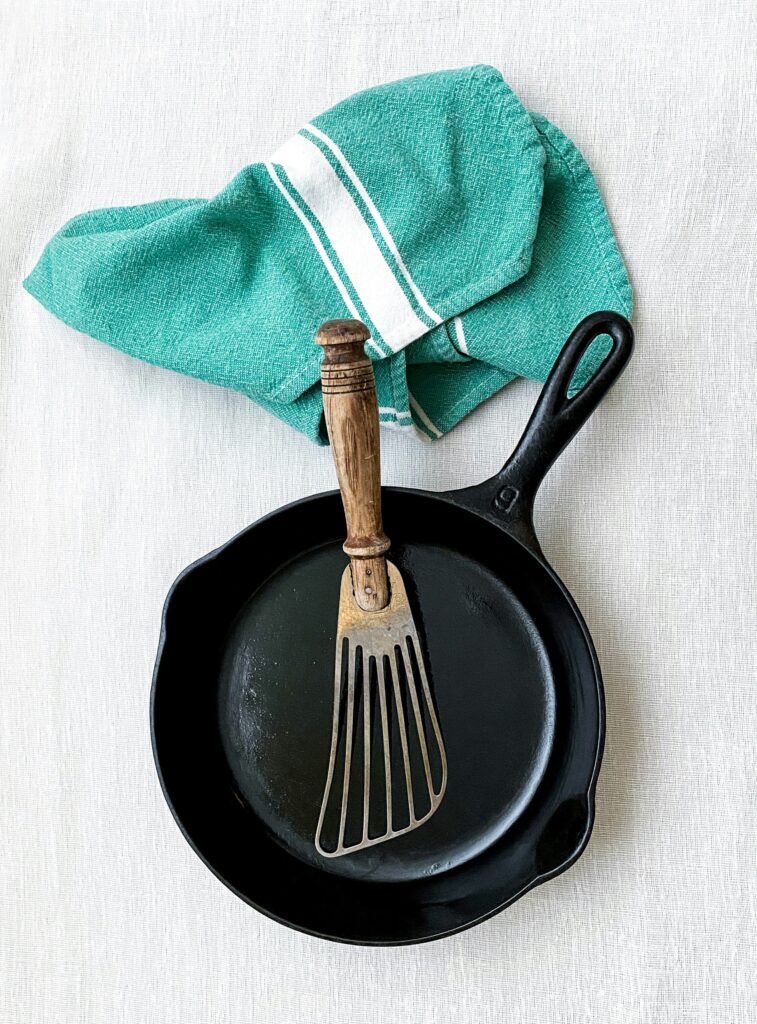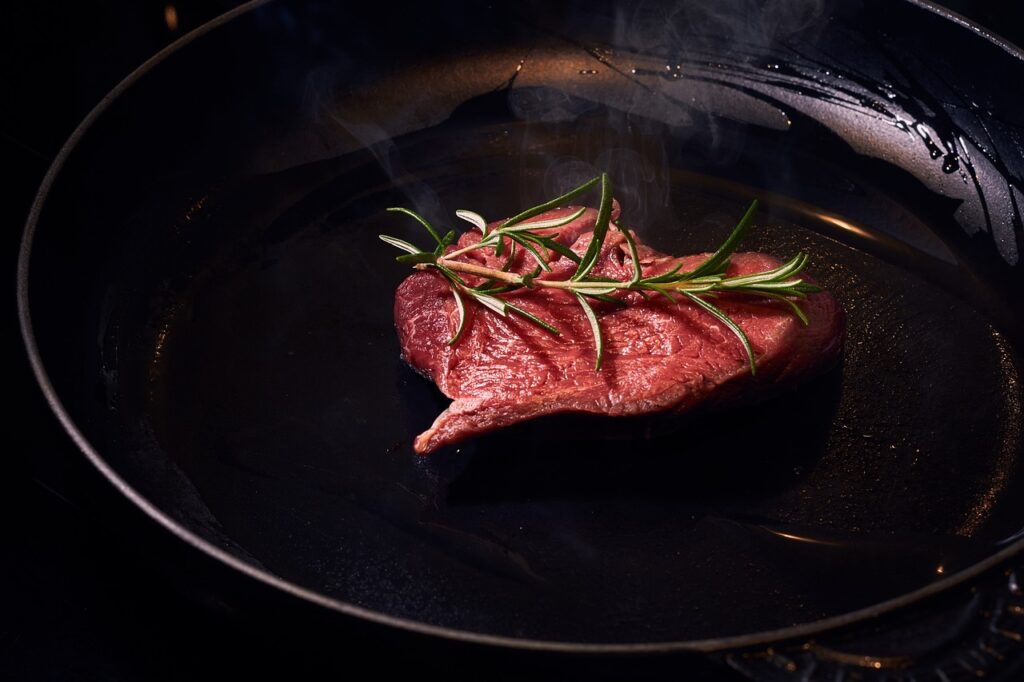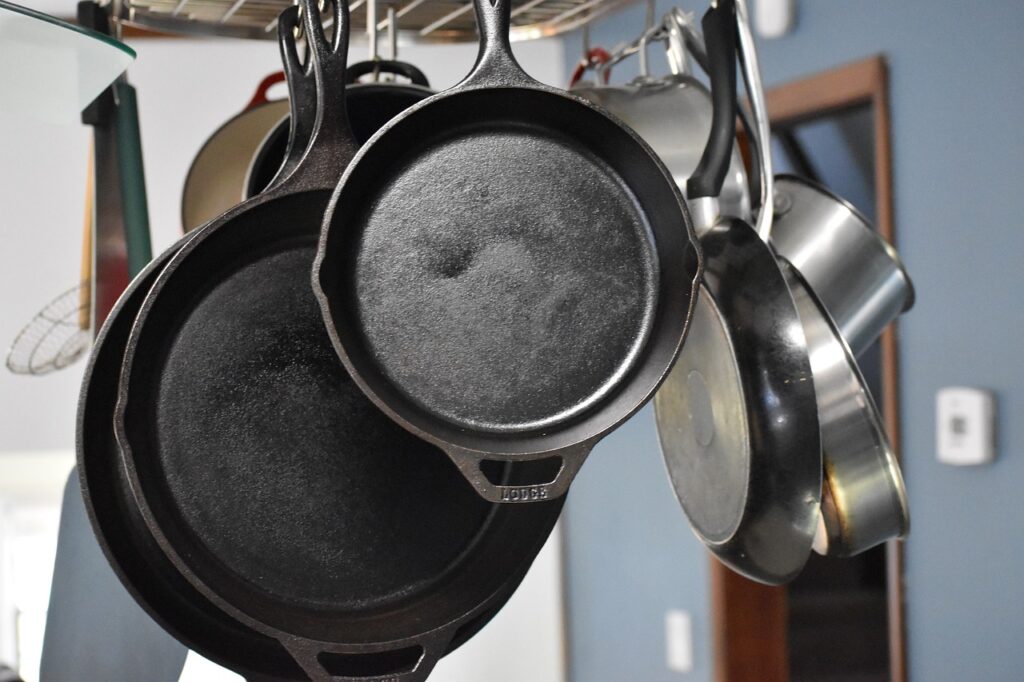Imagine yourself in the kitchen, armed with a trusty cast iron pan and ready to whip up a delicious meal. But wait! Before you start cooking, a few essential tips can take your cast iron pan culinary skills to the next level. From seasoning your pan to cleaning and maintaining it correctly, this article is your ultimate guide to mastering the art of cast iron pan cooking. So, grab a pen and get ready to upgrade your culinary game with these 10 essential cast iron pan cooking tips.

Table of Contents
Choose the right pan.
Choosing the right pan is crucial when cooking with a cast iron pan. You want to consider the pan’s size and weight to ensure it fits your needs and is easy to handle.
Consider size and weight.
Consider what you’ll be using the pan for. A larger cast iron pan would be a good choice if you’re cooking for a larger group or like to cook one-pot meals. On the other hand, if you prefer cooking smaller portions or want a pan that’s easier to maneuver, a smaller pan would be more suitable.
Additionally, keep in mind the weight of the pan. Cast iron pans are known for being heavy, so choose one that you can comfortably lift and move around your kitchen.
Look for a seasoned pan.
Another factor to consider when choosing a cast iron pan is whether it’s seasoned. A seasoned pan has a layer of polymerized oil on its surface, which creates a natural non-stick coating. This makes it easier to cook and clean with the pan.
If you’re purchasing a new cast iron pan, look for one already seasoned. Some brands offer pre-seasoned pans, while others may require you to season it yourself. It’s generally easier to start with a pre-seasoned pan, especially if you’re new to cooking with cast iron.
Preheat your pan
Preheating your cast iron pan is essential to ensure even cooking and prevent food from sticking.
Heat slowly and evenly
When preheating your pan, it’s important to heat it slowly and evenly. Cast iron heats up slowly but retains heat well, so starting with a low to medium heat setting is best. This allows the pan to warm up and gradually distribute the heat.
Avoid using high heat from the start, as it can cause hot spots and lead to uneven cooking. Patience is critical when it comes to preheating your cast iron pan.
Use medium to medium-high heat.
Once your cast iron pan is preheated, you can adjust the heat to medium or medium-high, depending on your cooking needs. This will allow you to achieve the desired cooking temperature and sear meats or cook vegetables to perfection.
Using the proper heat setting will help you achieve delicious results and prevent your food from sticking to the pan.
Season your pan regularly.
Regularly seasoning your cast iron pan is essential to maintain its non-stick properties and keep it in good condition.
Clean and dry thoroughly.
Before seasoning your pan, make sure it’s clean and dry. Use warm water and a mild detergent to remove any food residue. Avoid harsh soaps or abrasive materials, as they strip the seasoning away.
Once clean, thoroughly dry your pan with a towel or place it over low heat on the stove. Moisture can cause your cast iron pan to rust, so it’s crucial to ensure it’s scorched before proceeding.
Apply a thin layer of oil.
To season your cast iron pan, apply a thin layer of oil to the entire surface, including the handle. You can use vegetable oil, canola oil, or even flaxseed oil. Gently rub the oil into the pan using a paper towel or cloth, covering all areas.
The oil will help create a protective coating on the pan’s surface, preventing food from sticking and enhancing its non-stick properties.
Bake in the oven for one hour.
After applying the oil, place your pan in a preheated oven at around 350°F (175°C). Let it bake for about one hour. This process helps bond the oil to the pan’s surface, creating a durable and natural non-stick coating.
Remember to place a sheet of aluminum foil or a baking tray underneath the pan to catch any drips during the seasoning process.
Use the proper utensils.
Using the proper utensils when cooking with a cast iron pan can help preserve its seasoning and prevent damage.
Avoid metal utensils
Avoid using metal utensils, such as metal spatulas or knives, when cooking with your cast iron pan. Metal utensils can scratch the seasoning on the pan’s surface and potentially damage it.
Opt for wooden or silicone tools.
Instead, opt for wooden or silicone utensils. Wooden spatulas, spoons, or tongs are gentle on the pan’s surface and won’t scrape away the seasoning. Silicone utensils are also a great option as they have high heat resistance and won’t melt or scratch the pan.
Using the proper utensils will help prolong the life of your cast iron pan and ensure it remains in good condition for years to come.

Cook with oil or fat.
Cooking with oil or fat is a common practice when using cast iron pans, as it helps enhance the flavors of your dishes and aids in creating a delicious sear.
Choose high smoke point oils.
When selecting an oil or fat for cooking with your cast iron pan, choosing one with a high smoke point is essential. Oils with high smoke points, such as canola, grapeseed, or avocado, can withstand the high temperatures needed for searing and frying without burning or smoking.
Avoid using oils with low smoke points, such as olive oil or butter, as they can burn and create a sticky residue on the surface of your pan.
Preheat the oil before adding food.
To ensure even cooking and prevent food from sticking, preheat the oil in your cast iron pan before adding any ingredients. This will help create a barrier between the food and the pan’s surface, resulting in a better sear and more accessible food release.
You can test if the oil is hot enough by dropping a small piece of food, like a bread crumb, into the pan. If it sizzles and starts to cook, the oil is ready for use.
Avoid acidic foods
While cast iron pans are versatile and can be used for various dishes, avoiding cooking acidic foods is best.
Acids can damage the seasoning.
Acidic foods like tomatoes, citrus fruits, or vinegar-based sauces can react with the seasoning on your cast iron pan. This can cause the seasoning to break down and potentially affect the flavor of your dishes.
It’s best to use alternative cookware, such as stainless steel or enamel-coated pans, when preparing acidic dishes to avoid adverse reactions with your cast iron pan.

Monitor cooking temperature
Cast iron retains heat exceptionally well, making it essential to monitor the cooking temperature and adjust accordingly.
Cast iron retains heat well.
Once your cast iron pan is heated, it will retain heat for a long time. This means that the pan will continue to cook your food even after you turn off the heat. Keep this in mind when timing your dishes or adjusting your cooking times.
Adjust cooking time and temperature accordingly.
Due to the superior heat retention of cast iron, you may need to adjust your cooking times and temperatures compared to other types of cookware. It’s always better to start with a lower heat setting and increase it gradually, as cast iron pans can become very hot.
Monitoring the cooking temperature will ensure your food is perfect and prevent burning or undercooking.
Clean with care
Properly cleaning your cast iron pan is essential for maintaining its longevity and non-stick properties.
Avoid soap and abrasive materials.
Contrary to popular belief, you don’t need soap to clean your cast iron pan. Using soap can strip away the seasoning and affect its non-stick properties. Instead, use a mild detergent or hot water and a brush or sponge.
Avoid using abrasive materials, such as steel wool or metal scrubbers, as they can scratch the pan’s surface and remove the seasoning.
Use a stiff brush or scraper.
Use a stiff brush or scraper to remove any food residue or stuck-on bits. Gently scrub the pan’s surface, applying a bit of pressure if necessary. This will help dislodge any food particles without damaging the seasoning.
Dry immediately after cleaning.
After cleaning your cast iron pan, make sure to dry it immediately. Use a towel or place it over low heat on the stove to evaporate any remaining moisture. Moisture can cause your pan to rust, so it’s essential to thoroughly dry it before storing.
Additionally, you can apply a thin layer of oil to the pan after drying to protect its surface further and prevent rust from forming.
Store properly
Properly storing your cast iron pan can help prevent damage and maintain its seasoning.
Avoid stacking pans
Avoid stacking your cast iron pans directly on top of each other. The weight can cause scratches or make the pans stick together. Instead, place a paper towel or cloth between each pan to create a protective barrier.
If you have limited storage space, use pan racks or hanging hooks to keep your cast iron pans organized and easily accessible.
Store with a paper towel or cloth to prevent moisture
To prevent moisture from accumulating and potentially causing rust, store your cast iron pan with a paper towel or cloth. This will help absorb any remaining moisture and keep your pan dry and in good condition.
It’s also worth noting that storing your pan with the lid slightly ajar can allow for better airflow and prevent any trapped moisture.
Revive and repair your pan.
If your cast iron pan has developed rust or lost its seasoning, don’t worry! You can revive and repair it with a few simple steps.
Remove rust with vinegar and salt.
To remove rust from your cast iron pan, create a paste using equal parts vinegar and salt. Apply the paste to the rusty areas and scrub gently using a brush or sponge. The acidic nature of the vinegar and abrasive salt will help dissolve the rust and restore the pan’s surface.
Rinse the pan thoroughly after removing the rust and dry it immediately. Remember to re-season the pan to restore its non-stick properties.
Re-season the Cast Iron pan if necessary.
If your cast iron pan has lost its seasoning, it’s essential to re-season it to restore its non-stick surface. Follow the seasoning process mentioned earlier, applying a thin layer of oil to the entire surface and baking it in the oven for an hour.
Re-seasoning your pan will help create a new layer of seasoning, making it as good as new and ready for all your favorite cast iron cooking adventures.
In conclusion, cooking with a cast iron pan requires some care and attention, but the results are well worth it. By choosing the right pan, preheating it properly, seasoning regularly, using the proper utensils, cooking with oil or fat, avoiding acidic foods, monitoring cooking temperature, cleaning with care, storing correctly, and reviving or repairing when needed, you can enjoy the benefits of cooking with cast iron for years to come. So grab your trusty cast iron pan, follow these tips, and prepare some delicious meals!

